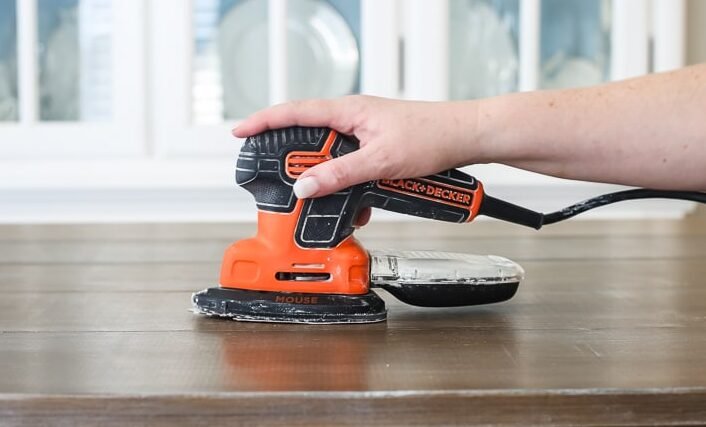
Achieving Perfectly Smooth Surfaces: The Art Of Using A Wide Belt Sander
Smooth surfaces are not just visually appealing, they also hold the promise of an unparalleled tactile experience. From furniture to flooring, achieving flawlessly smooth finishes has become an art form in itself. And at the heart of this craftsmanship lies the wide belt sander, a powerful tool that blends precision and power to transform rough surfaces into velvety-smooth wonders.
Whether you’re a woodworking enthusiast or a professional craftsman, understanding the intricacies of using a wide belt sander can unlock a world of possibilities for creating stunningly refined pieces that invite touch as much as they impress the eyes. In this article, we will dive into the secrets of using a wide belt sander to achieve unparalleled smoothness in your woodworking projects—so grab your sandpaper and also see our collections of woodworking tools as we embark on this journey together!
Choosing The Right Grit Size And Abrasive
Choosing the right grit size and abrasive for your wide belt sander is crucial in achieving perfectly smooth surfaces. It’s like having the right paintbrush and palette to create a masterpiece. Different grit sizes determine the coarseness of the abrasive, and therefore, how much material will be removed from the surface.
If you’re working on rough or uneven surfaces that need significant smoothing, starting with a lower grit size like 40 or 60 can help quickly remove material and level out imperfections. As you progress through higher grits such as 80 or 100, you’ll notice finer scratches left behind by previous coarser grits begin to disappear, resulting in a smoother finish. However, using too fine of a grit initially can prolong sanding time since it won’t effectively remove enough material.
The choice of abrasive also plays a vital role in achieving desired results when using your wide belt sander. Popular options include aluminum oxide, zirconia alumina, and ceramic abrasives. While aluminum oxide is affordable and suitable for general-purpose sanding applications, zirconia alumina offers longer durability and aggressive cutting action ideal for heavy-duty tasks. Ceramic abrasives take things up to another level with their exceptional longevity and ability to handle even tougher materials. By understanding these differences in abrasives, you can select the most appropriate one for your specific project needs.
In conclusion, selecting the right grit size and abrasive for your wide belt sander is essential in achieving flawless surfaces efficiently.
Proper Techniques For Using A Wide Belt Sander
Using a wide belt sander is an essential tool for achieving perfectly smooth surfaces, but it requires proper techniques to get the best results.
- One of the most important aspects of using a wide belt sander is understanding how to feed the material through the machine at the right speed and pressure. Too much speed or pressure can result in uneven sanding or even burning of the wood, while too little pressure may not effectively smooth out imperfections. It’s crucial to find the right balance and maintain a steady pace when feeding materials into the sander.
- Another key technique for using a wide belt sander is correctly adjusting the tracking and tension on the sanding belt. A misaligned or loose sanding belt can cause issues such as slippage, which can lead to uneven sanding and potential damage to both the material being worked on and even to yourself as well. Take your time to ensure that both ends of the sanding belt are properly aligned before starting any work, and regularly check during use that it remains stable and centered on the rollers.
- Additionally, paying attention to safety measures while operating a wide belt sander cannot be emphasized enough. Always wear appropriate protective gear such as safety goggles, dust masks, and ear protection since these machines generate significant amounts of noise and debris. Furthermore, keep your hands clear from any rotating parts when working with a wide belt sander – their powerful motors can cause severe injuries if caution is not exercised.
Common Mistakes To Avoid
- One of the most common mistakes to avoid when using a wide belt sander is applying too much pressure. Many beginners make the mistake of thinking that more pressure will result in a smoother surface, but this couldn’t be further from the truth. In fact, excessive pressure can cause the sandpaper to dig into the surface, creating uneven spots and swirl marks. It’s important to let the sander do its job and simply guide it gently along the surface.
- Another common pitfall is neglecting to properly prepare the wood before sanding. Skipping essential steps such as removing old finishes or filling cracks and imperfections can lead to less than desirable results. A wide belt sander works best on clean, smooth surfaces, so taking the time to adequately prepare your workpiece will ensure a flawless outcome.
- Lastly, failing to use proper safety precautions can have serious consequences when working with a wide belt sander. Always wear protective gear such as goggles and earplugs to prevent any potential injuries from flying debris or loud noise levels. Additionally, be mindful of where you place your hands during operation; accidents can happen if they get too close to the sanding belt. Taking these precautions may slow you down slightly but are well worth it for your personal safety and peace of mind while working with this powerful tool.
Conclusion:
In conclusion, utilizing a wide belt sander is the key to achieving professional-quality results when it comes to creating perfectly smooth surfaces. This versatile tool not only saves time and effort but also ensures consistent and uniform results. The ability to adjust the speed, pressure, and direction of sanding allows for customization according to specific project requirements.
Furthermore, understanding the various types of abrasives available for wide belt sanders can make a significant difference in achieving superior outcomes. From different grit sizes to specialized coatings, selecting the right abrasive can enhance efficiency and maximize surface quality. It is important to experiment with different combinations and techniques to find what works best for each material or application.
Lastly, attention must be paid to proper maintenance and care of your wide belt sander in order to ensure long-term effectiveness. Regular cleaning of dust collection systems and replacement of worn-out parts will not only prolong the lifespan of your machine but also contribute towards optimal performance.
By harnessing all these factors – precision control over sanding parameters, selecting suitable abrasives, and ensuring proper upkeep – anyone can unlock the true potential that a wide belt sander has to offer. With practice and patience, professional-level results are well within reach for both experienced craftsmen and DIY enthusiasts alike.

